This science experiment is one of three experiments listed in my recent post What melts ice the fastest? Here, we learn about heat absorption by color by creating a simple science experiment with just paper and ice cubes. BTW, this activity is perfect for preschool science!
And it’s also one of the 50 Science experiments for kids that we shared in our other post.
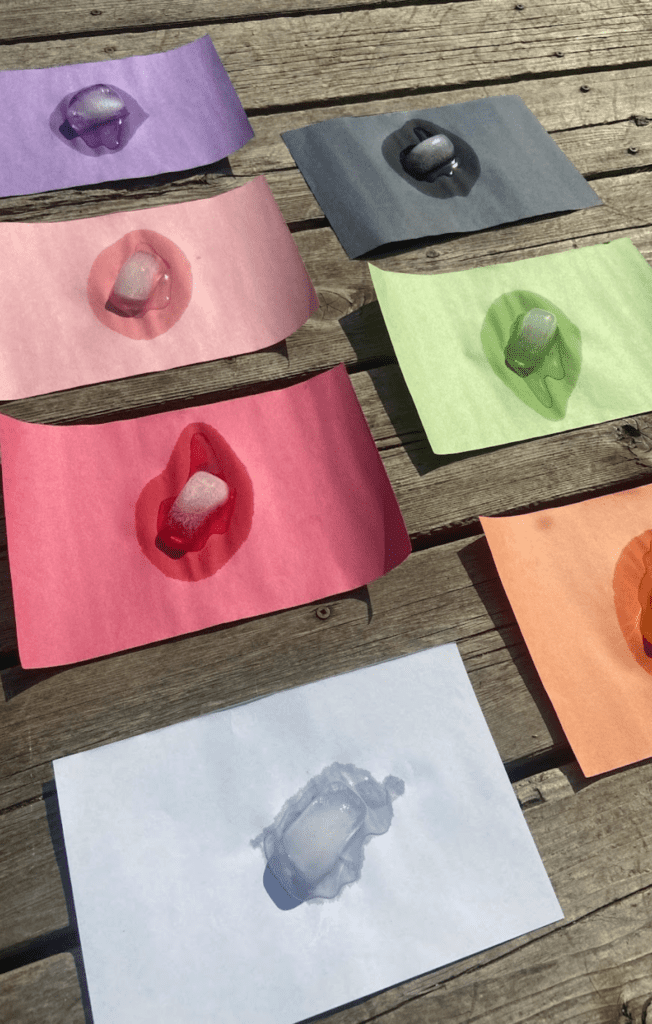
Demonstrating heat absorption by color
This is an excellent activity for young scientists – Especially those who love learning outside! Learn why we think science for kids is so important in this post.
Many of us know that black absorbs more heat than other colors (have you ever felt an asphalt road on a sunny day?). But, how can you let students explore which color absorbs the most heat? With this super easy science experiment, it’s easy!
Do certain colors absorb more heat than others?
Different colors do absorb heat differently. Kidadle has an awesome article that explains the science behind this.
Here’s what they say:
The heat energy from the sun’s rays is reflected, absorbed, or passes through objects. The darker the color, the more heat will be absorbed. The lighter the color, the more thermal energy can transmit through the object. This means that darker colors will be hotter and lighter colors will be cooler if exposed to the same heat energy.
Over at Color meanings, they also talk about how colors and wavelengths of light interact. This is along the same lines as what I talked about before, but they have great visuals showing how a certain colored object absorbs these wavelengths.
What are wavelengths? Well, visible light (all the visible colors we can see with the human eye) are essentially the colors of the rainbow. The color we see on any given object depends on which light wavelengths are reflected.
For example, a black object absorbs all of the colors of light and reflects none, so we see a black object. Since light energy transforms into thermal energy, we could assume that this color would absorb the most heat since it’s absorbing numerous colored wavelengths.
On the opposite side of this, a white object reflects all of the wavelengths, causing our eyes to see the object as white. Following the same logic, we would assume that a white object would be cooler since it reflects wavelengths rather than absorbing them. But, if we had, say, a red apple, it would be reflecting red light to our eyes and absorbing the rest of the colors.
It’s also important to note it’s not just about which color you’re looking at but about the shade too. Darker colors absorb more visible light than light colors!
So, how can we test the theory that darker colors absorb more heat than lighter colors?
Before you start: Download these worksheets!
While these activities are great on their own, you may want to use worksheets as a form of assessment. If so, either head to my Teachers Pay Teachers store to download my Free Don’t melt the ice! STEM challenge and worksheet bundle, or download the individual worksheet for this experiment as a PDF below.
I also have a Scientific method worksheet available for free in my shop.
How to create the experiment
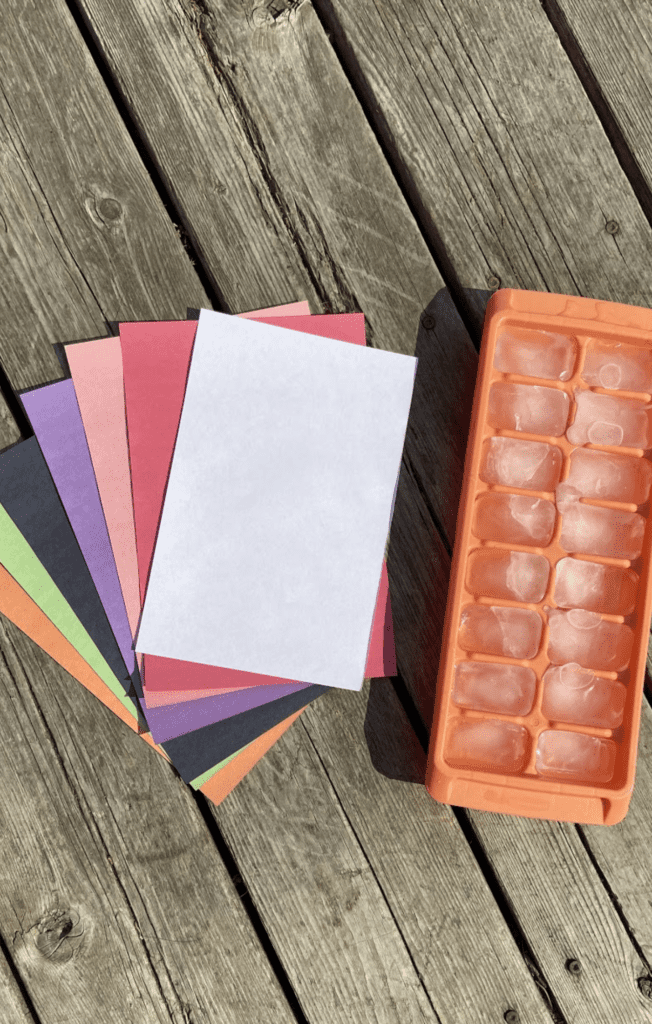
Materials
- 7 ice cubes
- 7 different colored sheets of paper, including white and black
- If you don’t have 8, that’s okay! Just use the colors you have on hand… That’s what I did and that’s why I don’t have the true rainbow of colors!
- Half of a regular-sized construction paper is good
- A hot day with some direct sunlight
Instructions
- Place one ice cube on each piece of paper
- Record your starting time
- Let the sun melt the ice
- Check on your ice every few minutes – Track which order they melt in!
- Observe and communicate your results – What did you see?
Which color absorbed the most heat?
See what happened when we tried this experiment in the photos below!
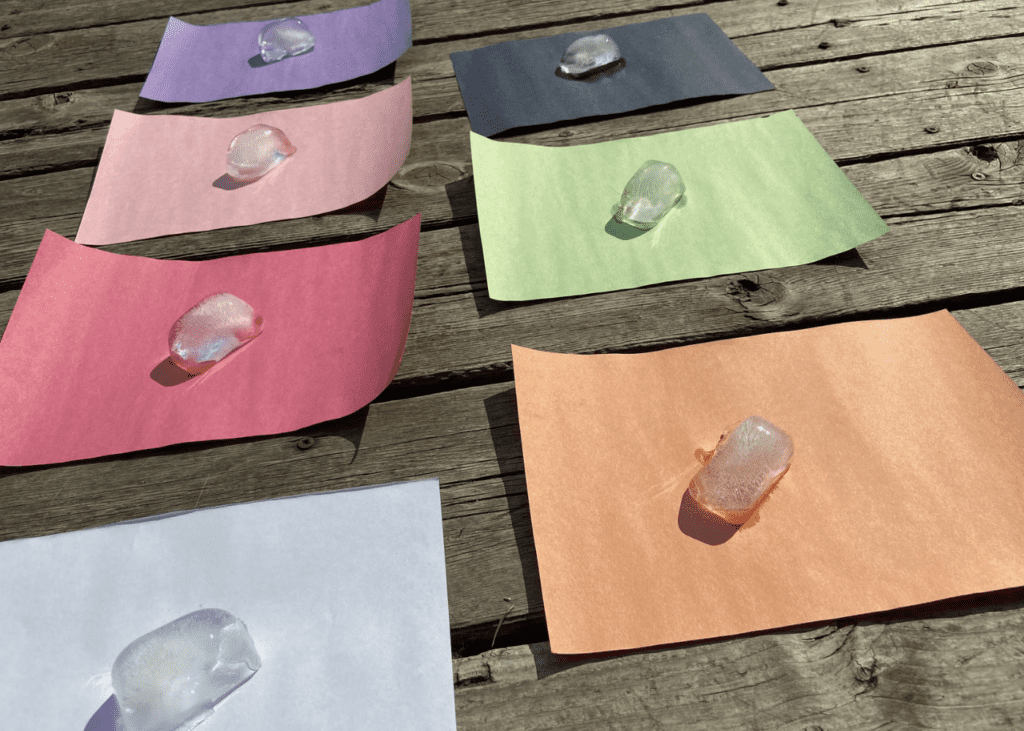
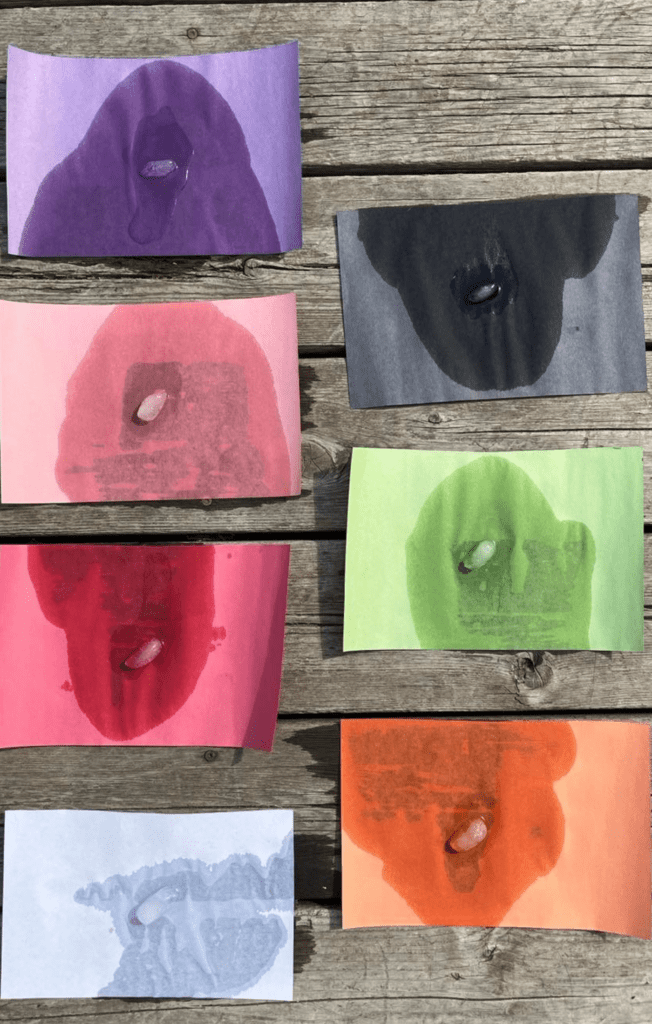
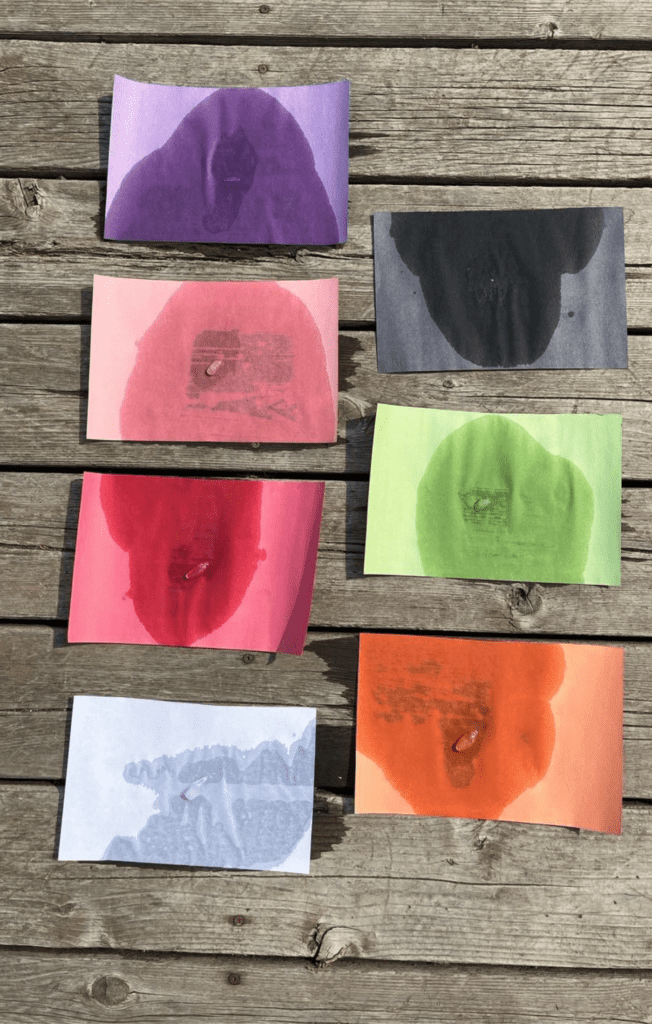
So, our experiment proved that black absorbs the most heat and that all colors absorb heat differently. We know this is true because all of the ice cubes were the same size, they were all exposed to the same temperature, and the only difference was the colors.
By conducting this experiment, we learn that lighter colors reflect visual light (light wavelengths). By comparing the amount of heat absorbed by different colored objects, we can also learn that a lighter colored object will take in less heat than dark colors.
If you’ve tried this experiment at home, we would love to see your results!
More science posts
Searching for more science experiments and science-related activities to do with your little ones? Check out this category to see all of our posts about science for kids!

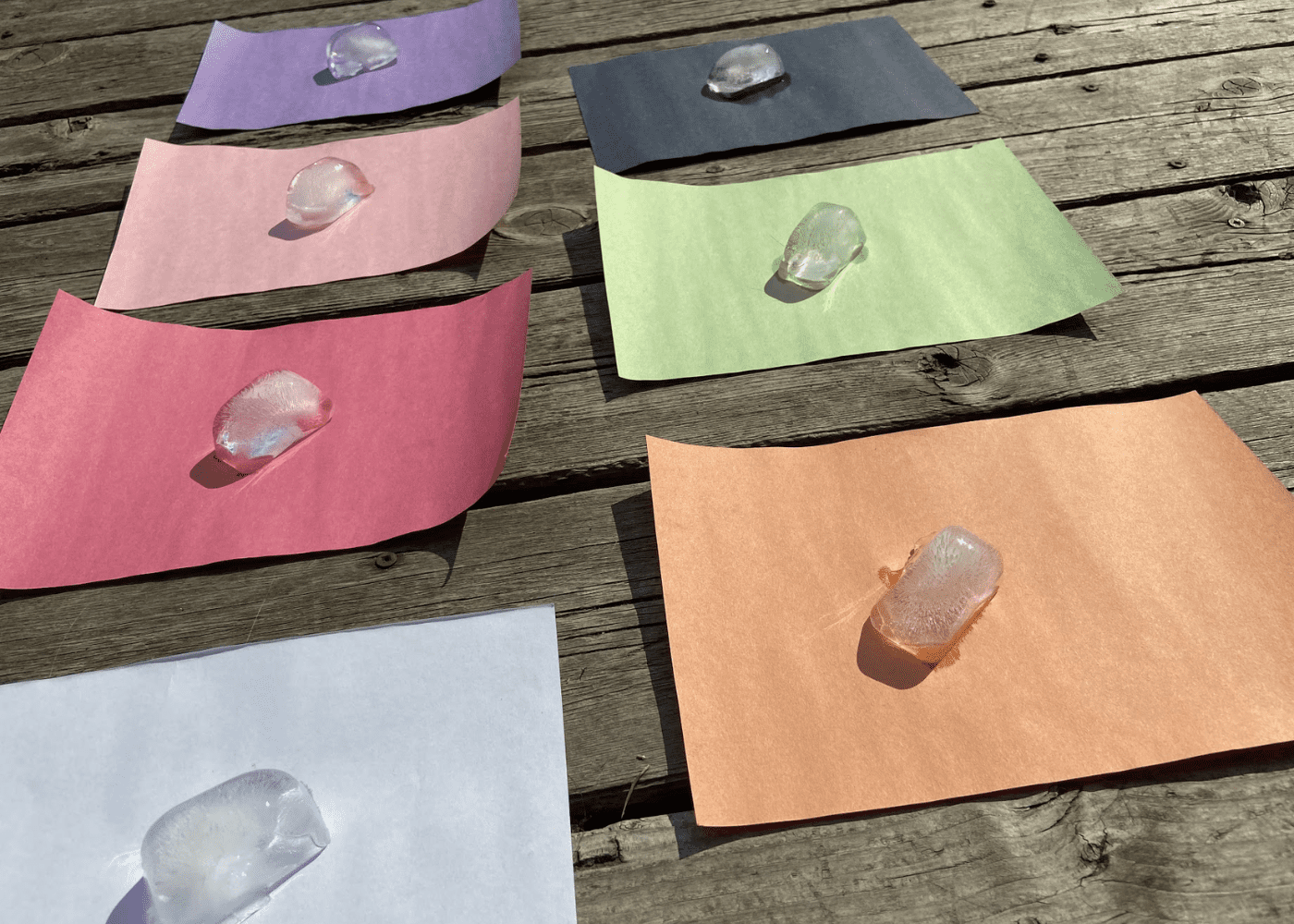
Leave a Reply